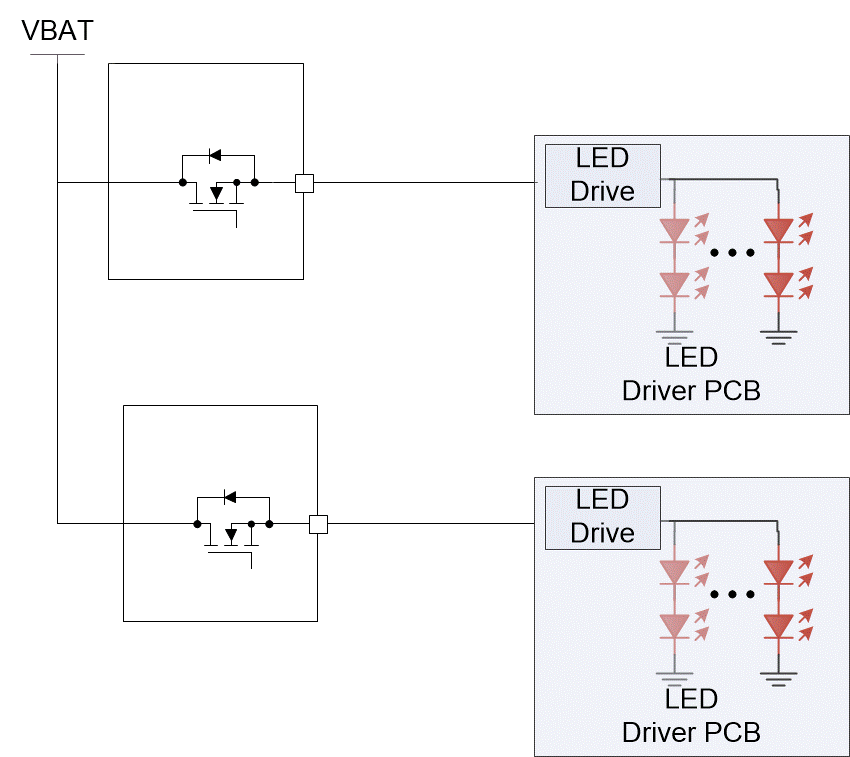SLVAE30E February 2021 – March 2021 TPS1H000-Q1 , TPS1H100-Q1 , TPS1H200A-Q1 , TPS1HA08-Q1 , TPS25200-Q1 , TPS27S100 , TPS2H000-Q1 , TPS2H160-Q1 , TPS2HB16-Q1 , TPS2HB35-Q1 , TPS2HB50-Q1 , TPS4H000-Q1 , TPS4H160-Q1
- Trademarks
- 1Introduction
- 2Driving Resistive Loads
- 3Driving Capacitive Loads
- 4Driving Inductive Loads
- 5Driving LED Loads
- 6Appendix
- 7References
- 8Revision History
5.5 Why Use a Smart High Side Switch?
TI Smart High Side Switches can be used to provide power to LED modules by either directly driving LEDs or by driving LED modules. The use of multiple Smart High Side Switches in a control module to power multiple LED modules is shown in Figure 5-2.
 Figure 5-2 Smart High Side Switches Powering LED Modules
Figure 5-2 Smart High Side Switches Powering LED ModulesThe Smart High Side Switch in the control module serves three primary functions:
- Provide diagnostic features like open load detection
- Enable LED failure recognition through load current sensing
- Serve as a constant current source for direct drive LED's
The diagnostics are especially important in modules without an MCU and where no information on the status of the lights can be obtained from the LED lighting ECUs.